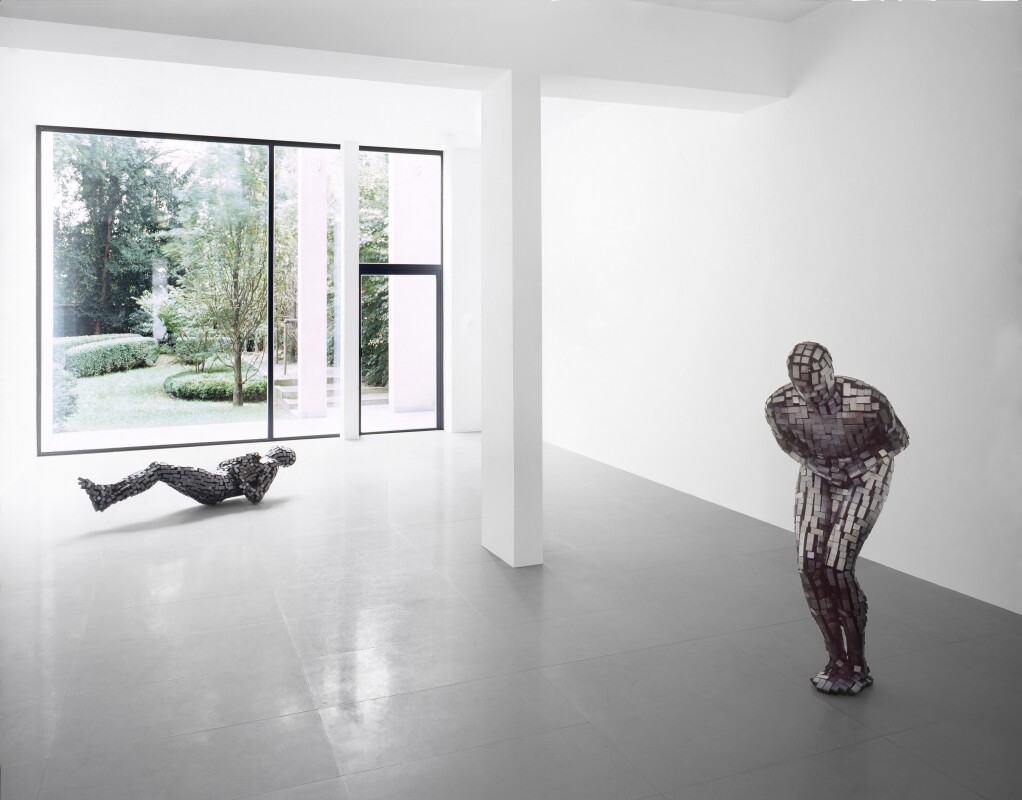The opposing principles – mass and void, earth and space, the darkness of the body and light – underpin so much of Antony Gormley’s sculpture and are held in dynamic tension here. This work is part of the ongoing BLOCKWORKS series, which makes physical pixelisations with a rising canon of four blocks, each eight times the volume of the one before, keeping the same 1:1:2 proportion. In this series, changes in the basic body pose such as the move from a calm, impassive stance to one that registers more tension, bring different results or might throw up a new structural challenge. So, too, might the differing orientation of the form – vertical or horizontal, raised on the wall, or suspended upside-down. FIX II lies directly on the floor.

Image: © Photograph by Vincent Everarts
Artwork: © Antony Gormley
Inspired by a visit to Pompeii in 2002, Gormley made three works similar to FIX II, about which he states:“The pyroclastic cloud that covered Pompeii in ash, burned all the oxygen in the atmosphere and vaporised the bodies of the inhabitants in poses of fall-out, is relevant for my work. The ‘lost body’—as the most extreme form of translation from life to something close to art—is a radical replacement for the lost wax process and is more direct, more shocking, more about human fragility and our desire for survival. They are shadows that have been made solid, holes that have been filled. I started my work making moulds which were left empty or filled with a darkness which I associated with our experience of body’s darkness. The plaster forms cast from these Pompeian holes are very much masses that materialise a human space in space—a spatial displacement rather than a figural representation. The bodies each lie or crouch in their unique position of facing death, but they do not have the morbidity of the mummy, more a direct existential appeal reminding us that life can end at any time whether during a trip to the shops or while sleeping. They are a form of future shock; a premonition of some cataclysmic end whether through lack of air or a nuclear winter. The abstracted bodies of Pompeii A.D. 79 models the end of the human project and gives us a foretaste of our own demise, in the manner of the dinosaur skeleton, but much more immediate.” (The Last Days of Pompeii: Decadence, Apocalypse, Resurrection, J. Paul Getty Museum, Getty Villa, Los Angeles, 2012, p. 234)